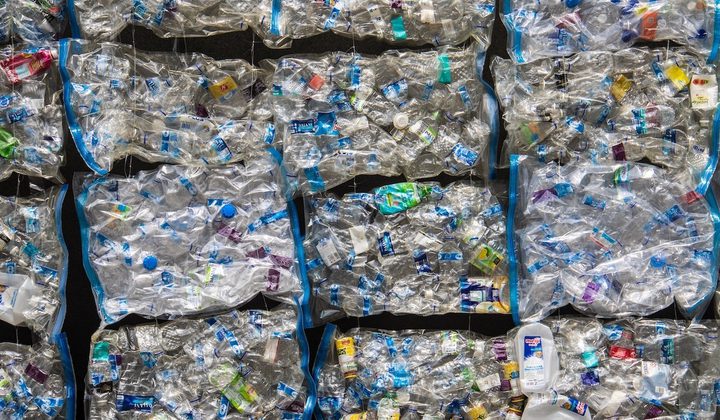In this article, the authors reflect on the improvements needed for the World Custom Organization's Harmonized Commodity Description and Coding System to facilitate the transition to a circular economy, and also put forward additional measures that will be required in this transition.
Disclaimer
Any views and opinions expressed on Synergies are those of the author(s) and do not necessarily reflect those of TESS or any of its partner organizations or funders.
-----
No country can achieve a circular economy in isolation.
International trade plays a crucial role in providing access to the goods, services, and technologies necessary for implementing circular business models. This includes product leasing, reuse, repair, remanufacturing, and recycling. Additionally, trade in used goods for direct reuse, repair, refurbishment, or remanufacturing can create affordable access to vital resources and generate local demand, promoting industry and employment.
Trade also facilitates the flow of secondary raw materials and waste destined for recovery and reuse, allowing for the aggregation of materials in areas of high demand and economies of scale.
Circular economy-enabling trade flows have experienced rapid growth over the past two decades, increasing from $94bn to $302bn since 2000.

Chatham House circular trade flows mapping tool illustrates $302bn of global trade in 2020 of used goods, secondary raw materials, wastes, scraps, and residues
However, challenges in regulating and facilitating circular-enabling trade flows persist due to a lack of shared classifications, definitions, and standards for circular goods and their production methods, along with poor supply chain transparency.
In the absence of effective regulations, these trade flows may result in negative environmental, health, social, and economic consequences, particularly in low-income countries. Examples include illicit shipments of hazardous waste, poor-quality used goods flooding secondary markets, and trade in goods and services that promote a linear and wasteful economic model (such as products containing harmful substances).
To address these challenges effectively, there is a pressing need to enhance the capabilities of customs agencies and intergovernmental organizations to regulate and mitigate risk of trade flows in a coordinated manner while maximizing their benefits. Our recent report, explores the potential of the World Customs Organization's Harmonized System (HS) of codes to address these challenges. The report was informed by a two day expert workshop hosted by Friedrich-Ebert Stiftung and UNECE as well as expert interviews.
What Are the Current Strengths of the HS in Facilitating the Transition to a Circular Economy
The HS codes provide a universal classification system that helps track and understand international trade dynamics. The HS system's strengths in facilitating circular trade include:
1. For businesses: Having harmonized codes specific to circular economy goods provides information on global trade that can then help to identify markets and make a case for financing, and it can assist in transparency of supply chains.
2. For national policymakers: The HS system assists countries in understanding their trade dynamics that impact the shift to a circular economy, including imports, exports, and key trading partners, enabling them to adjust trade restrictions and requirements to support domestic circular economy efforts.
3. For intergovernmental collaboration: The HS offers a shared nomenclature that fosters collaboration between nations, facilitating trade agreements, mutual recognition, harmonization of standards, reduced tariffs on circular-enabling goods and services, restrictions on harmful goods and materials, and certain trade facilitation measures.
What Improvements Are Needed for the HS to Facilitate the Transition to a Circular Economy?
To enhance the effectiveness of the HS in facilitating the transition to a circular economy that supports sustainable development, several steps are recommended:
1. Creation of new classifications: The HS system currently lacks specific classifications for goods that may be central to transitions to a circular economy. While it includes codes related to waste, recycled content, and some remanufactured goods, these are limited in scope. One option is therefore to introduce new or revised classifications for specific goods that enable a more circular economy as well as for those that governments are seeking to regulate, restrict, or ban. However, introducing or revising classifications is not an easy process, as outlined in the report.
2. Institutional capacity strengthening: A number of participants in the expert workshop outlined the need for all parties to the HS review process to be properly resourced to ensure that HS updates necessary to facilitate trade that supports the transition to a circular economy (and trade in other environmental goods) and also to restrict trade in goods harmful to circular economy goals are done correctly, in a timely manner, and with due reflection for sustainable development, public health, and environmental considerations. This also applies to customs administrations, which need support to invest time and resources to participate in the review process and manage national regulations based on those changes.
3. Deeper collaboration with multilateral environmental agreements: The HS plays an important role in helping businesses and governments comply with multilateral environmental agreements (MEAs) such as the Basel, Stockholm, and Rotterdam conventions. But ensuring alignment has historically been challenging as MEAs often describe goods in ways that do not easily translate into HS provisions. At the same time, it is vital that any efforts to update the HS system reflect and reinforce the environmental and health considerations embedded in rules, guidelines, and recommendations emanating from MEAs and associated processes. Workshop participants highlighted the need to continue working to strengthen and deepen collaboration between the secretariats of the MEAs and the World Customs Organization to ensure joint understanding of the needs and constraints. This need for greater coordination is particularly relevant for the development of the global plastics treaty.
4. Extension of the level of detail, for example moving to an 8-digit international system: Expanding the HS from a 6- to an 8-digit system could help provide more detailed information for customs and businesses on the circular credentials of goods. However, the World Customs Organization has made clear that a move to an 8-digit system would be a major structural change for trade and customs. While it will highlight this suggestion to its members, it will do so alongside a range of other possible improvements to the HS that could also enhance the level of information collected within the context of the Exploratory Study on a Possible Strategic Review of the HS. This will enable their members to consider feasibility issues.
Beyond the HS, What Additional Measures Are Required to Facilitate the Transition to a Circular Economy?
Recognizing the inherent limitations of the HS in regard to promoting a more circular economy—as described in point 3 below on product data for example—it is essential to explore additional measures that could streamline circular trade flows, reduce the burden on customs administrations, and bolster the capacity of customs authorities to monitor and regulate trade in both circular goods and those goods that governments are seeking to restrict or phase out. These measures could include:
1. Trusted circular trader schemes: A “trusted trader” scheme is a certification programme offered by customs administrations or relevant government agencies to businesses engaged in international trade, providing certain benefits and privileges to approved traders who meet specific criteria and demonstrate a high level of compliance with customs regulations and security standards. Similar to trusted trader programs, a specialized trusted circular trader initiative could offer greater incentives to businesses involved in circular trade flows.
2. Resource recovery lanes: These would consist of designated pathways within supply chains for efficient collection, recycling, or reuse of waste materials and resources. Resource recovery lanes could aim to tackle a current pain point facing companies that need reliable, timely, and affordable access to secondary raw materials at scale from abroad to make their products more sustainable, yet which currently face severe delays and administrative hurdles.
3. Integration of product data relevant to circular economy goals: One of the key limitations of the HS in terms of facilitating circular trade is that the HS classes goods by their physical attributes. Yet in nearly all cases it is not possible to identify the circularity of a good through its physical attributes but rather by its non-physical attributes. These include a good’s condition (new, used, unusable), durability, repairability, recyclability, or non-toxicity, as well as its methods of production or its intended use in the importing country.
Reflecting on the data challenge, practical solutions and pilot programmes are needed to better capture and communicate circular-relevant information on goods at international borders in a globally interoperable and HS-compatible manner. Many experiments are already underway, such as DATAPIPE (led by TU Delft and TNO), and UNECE’s Sustainability Pledge.
Future experiments should be cognisant of the day-to-day challenges many resource-constrained customs agencies face in developing and least developed countries in terms of regulating trade flows—including most prominently in relation to illicit waste trade—and must therefore include them as primary partners in the design of future solutions.
-----
Jack Barrie is Research Fellow, Environment and Society Centre, Chatham House.
Gael Grooby is Deputy Director, Tariff and Trade Affairs, World Customs Organization.
This article is derived on the report Going circular: How the Harmonized System Codes can/not support a circular economy and what else could be done by Jack Barrie and Gael Grooby.
-----
Synergies by TESS is a blog dedicated to promoting inclusive policy dialogue at the intersection of trade, environment, and sustainable development, drawing on perspectives from a range of experts from around the globe. The editor is Fabrice Lehmann.
Disclaimer
Any views and opinions expressed on Synergies are those of the author(s) and do not necessarily reflect those of TESS or any of its partner organizations or funders.
License
All of the content on Synergies is licensed under a Creative Commons Attribution-NonCommercial-ShareAlike 4.0 International (CC BY-NC-SA 4.0)
license. This means you are welcome to adapt, copy, and share it on your platforms with attribution to the source and author(s), but not for commercial purposes. You must also share it under the same CC BY-NC-SA 4.0 license.
If you would like to reuse any material published here or if you have any other question related to Synergies, send an email to fabrice.lehmann@graduateinstitute.ch.



